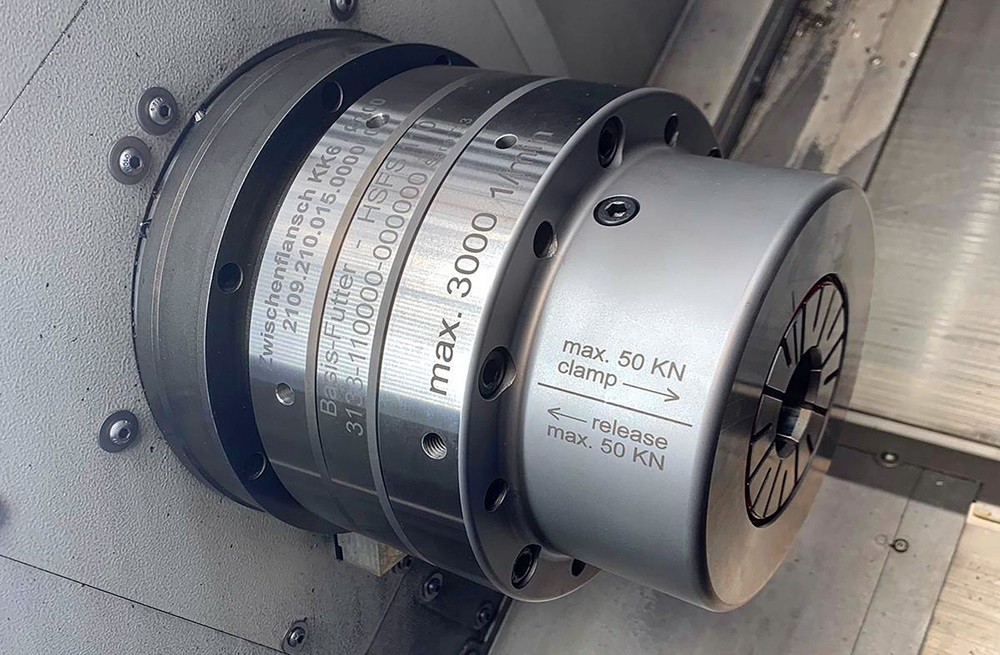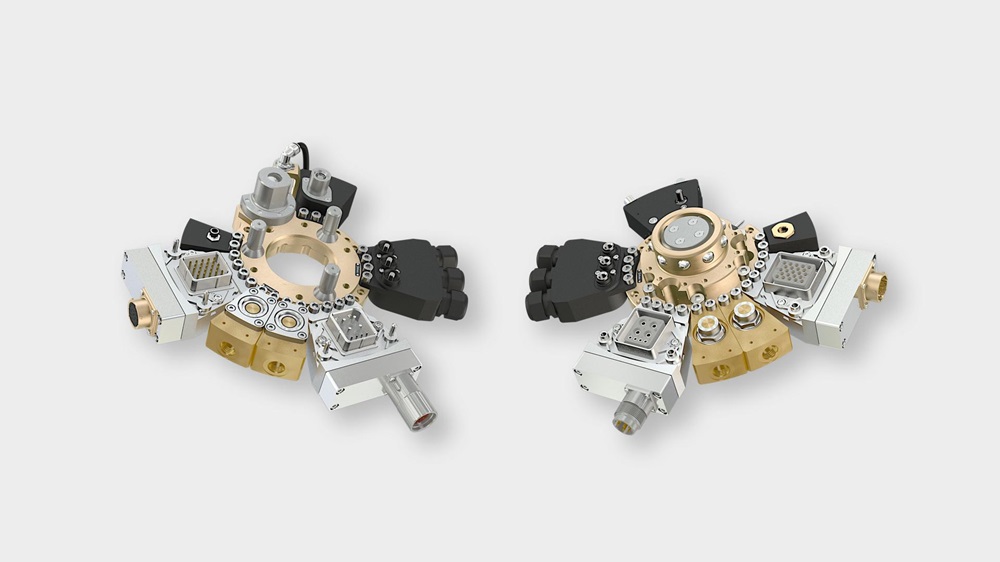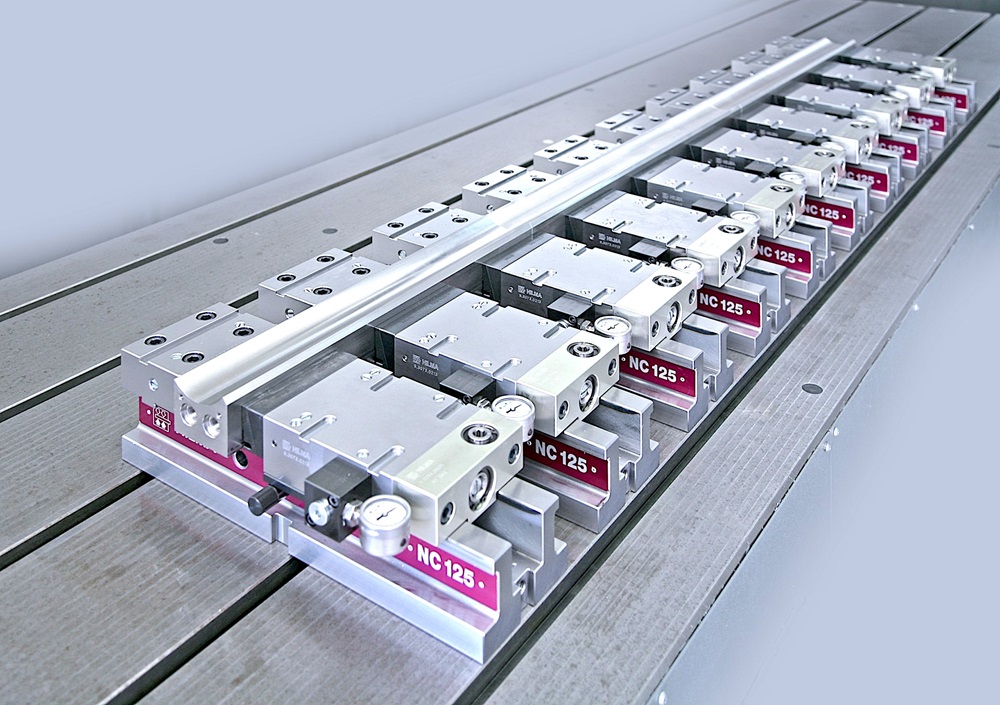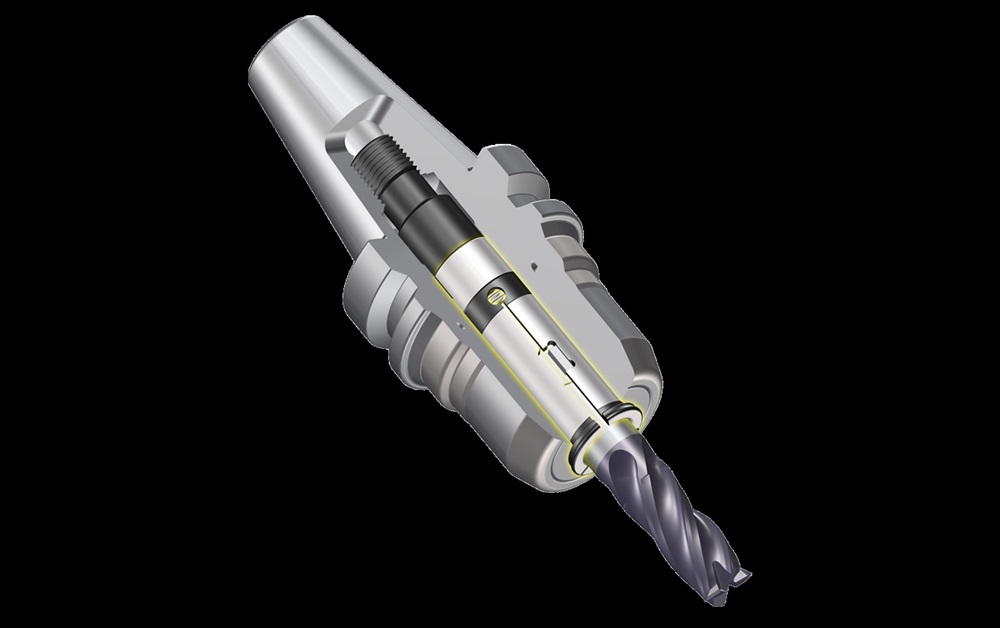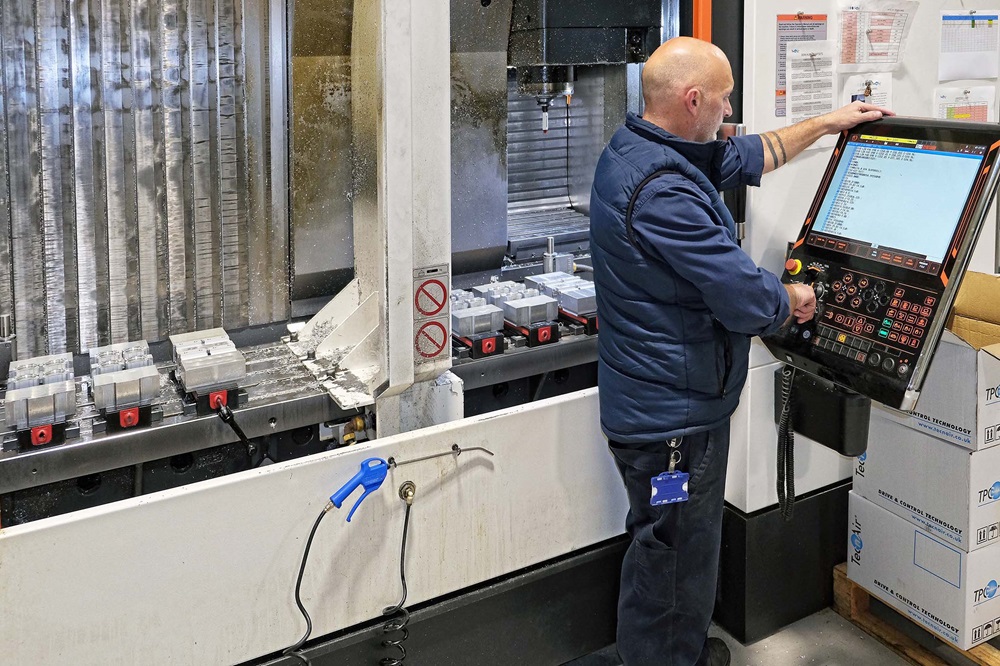More flexibility in machining production and significantly reduced set-up times: these are the premises under which Ringspann presents its new HSFS 110 clamping sleeve chuck. This innovative precision clamping system offers numerous advantages, especially for users of turning/milling machines with main and counter spindles, and machine tools with bar loaders. Since the clamping system does not require pull-back action, it is equally suitable for machining bar stock and material sections in the first set-up or workpieces from the second clamping step.
With a diameter range from 22 to 80 mm, the new HSFS 110 is a versatile clamping fixture for many different tasks. It also provides the user with additional flexibility, not least because it allows the clamping diameter to be changed by up to 1.5 mm.
The HSFS 110 clamping sleeve chuck is a purely mechanical clamping system consisting of a base chuck, clamping sleeve, draw tube adapter and adapter flange. While the adapter flange connects the machine spindle to the base chuck, the draw tube adapter transfers the actuating force from the clamping force device of the machine spindle into the base chuck.
The clamping sleeve is an interchangeable part that offer easy and fast replacement as and when necessary without special tools. In addition, the use of individually designed stop plates makes it possible to load and process workpieces axially positioned from the front. For this reason, the HSFS 110 is suitable for material sections in the first clamping set-up without any problems.
Thanks to its high adaptability and easy handling, Ringspann says that the HSFS 110 is one of those clamping systems that can give the machining of workpieces noticeable economic efficiency.
For further information www.ringspann.co.uk






